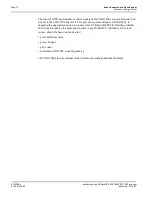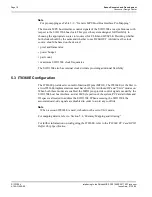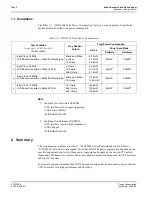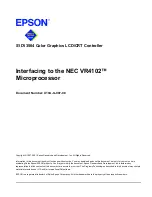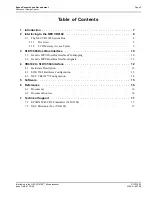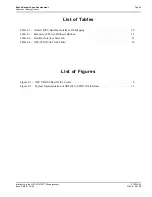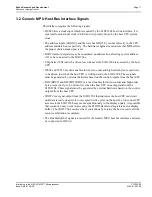
Page 4
Epson Research and Development
Vancouver Design Center
S1D13504
Power Consumption
X19A-G-006-04
Issue Date: 01/02/02
1.1 Conditions
The Table 1-1: “S1D13504 Total Power Consumption” below gives an example of a particular
environment and its effects on power consumption.
Note
1. Conditions for Software SUSPEND:
• CPU interface active (signals toggling)
• CLKI active (6MHz)
• Self-Refresh DRAM
2. Conditions for Hardware SUSPEND:
• CPU interface inactive (high impedance)
• CLKI stopped
• Self-Refresh DRAM
2 Summary
The system design variables in Section 1, “S1D13504 Power Consumption” and in Table 1-1:
“S1D13504 Total Power Consumption” show that S1D13504 power consumption depends on the
specific implementation. Active Mode power consumption depends on the desired CPU perfor-
mance and LCD frame-rate, whereas Power Save Mode consumption depends on the CPU Interface
and Input Clock state.
In a typical design environment, the S1D13504 can be configured to be an extremely power-efficient
LCD Controller with high performance and flexibility.
Table 1-1: S1D13504 Total Power Consumption
Test Condition
Core V
DD
= 3.3V IO V
DD
= 5.0V
ISA Bus (8MHz)
Gray Shades /
Colors
Total Power Consumption
Active
Power Save Mode
Software
Hardware
1
Input Clock = 6MHz
LCD Panel Connected = 320x240 Monochrome
Black-and-White
4 Grays
16 Grays
38.7mW
43.9mW
46.8mW
20mW
1
7.59uW
2
2
Input Clock = 6MHz
LCD Panel Connected = 320x240 Color
4 Colors
16 Colors
256 Colors
44.4mW
49.7mW
51.2mW
20mW
1
7.59uW
2
3
Input Clock = 25MHz
LCD Panel Connected = 640x480 Monochrome
Black-and-White
16 Grays
113.3mW
124.6mW
24mW
1
7.59uW
2
4
Input Clock = 25MHz
LCD Panel Connected = 640x480 Color
16 Colors
256 Colors
64K Colors
145.6mW
150.6mW
150.0mW
24mW
1
7.59uW
2



